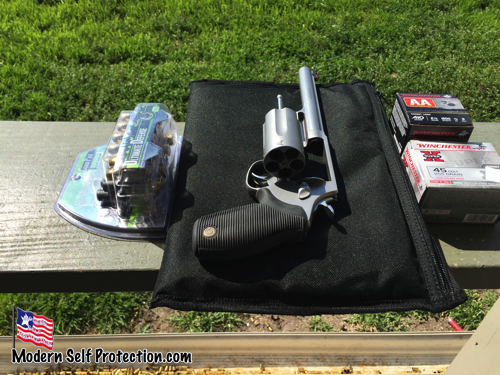
The Taurus Judge was a revolution in design when it came out in 2006 because it could fire .410 shot shells and .45 Colt rounds. Being able to fire both kept it off the NFA (class III) list as a short barrel shotgun. Taurus actually designed a 20 Gauge version one year, but ATF wasn’t having any of that.
I got a chance to shoot a stainless steel six-inch gun last week. I only had 50 rounds of .45 Colt, 10 .45 Colt BJHP by Remington, 50 rounds of .410 9 Shot, and 10 4-Pellet 000 Buck. It was all I could scrounge up. Some ammo is still tight here, .45 Colts and .410s are hard to come by.
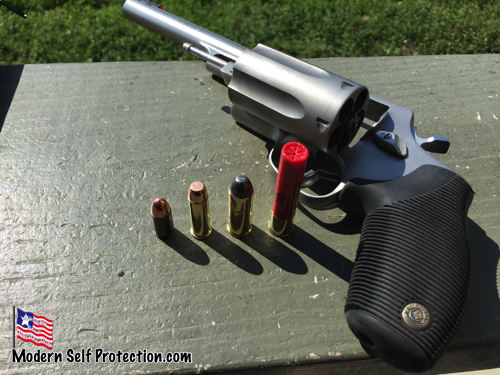
The Judge was really designed to shoot the shot shells more than .45s but I started with the .45 Colt rounds because it seemed like more fun. The Judge has really shallow rifling and I wondered if that would make accuracy a problem. I only had a couple steel targets at my local range (Lone Star Handgun) so a full test of accuracy was impossible. No bench resting and shooting targets at 50 yards. I was able to hit plates at 25 yards without any problems.
I shot both double and single-action and could control the trigger either way. The double-action pull on this example was a little tough but if I staged it a little I could make hits pretty easily. I generally shoot double action guns by staging the trigger so I really didn’t have any difficulty shooting this revolver. Staging the trigger simply means that I pull the trigger far enough to get the hammer all the way back, then pause to verify or adjust my sight picture, when I’m happy with what I see, I finish the trigger pull and discharge the gun. With a little practice it becomes very easy to manipulate any double-action trigger as long as it’s semi smooth and predictable. I found this trigger smooth and very predictable (it released the hammer at the same spot every time).
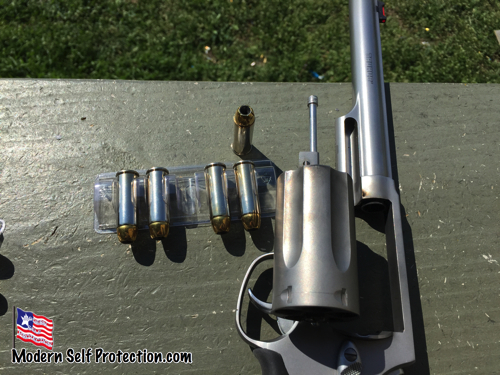
This revolver is a boomer and recoil is rather heavy, but I didn’t notice it until after I was done and picked up my .38 snub. While the recoil was heavy it was only difficult to do fast follow up shots, it wasn’t painful like some really big bore revolvers can be. I was disappointed when I ran out of .45 Colts to shoot.
After hitting steel with 255 grains of lead moving to a ½ oz #9 shot was anti-climatic and down right boring. I’m not a .410 guy and have only shot a couple of them. But this revolver seemed to spread shot really fast. Shooting man-sized silhouette steel targets at 10 yards I could see the dirt fly all around the target and hear only the faintest little clang. I guess if I got within 10 yards of a bird it would make a great hunting gun. The .45 Colts where much more fun to shoot and the recoil felt the same.
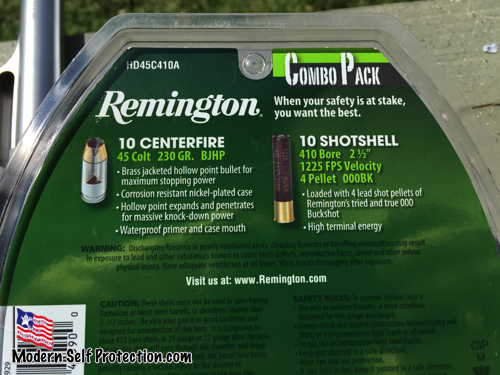
After I ran out of shotgun shells I busted open a Remington Ultimate Defense Package that came with 10 4-Pellet 0000 Buck, and 10 .45 Colt BJHP (Brass Jacketed Hollow Points) and according to the package the “Hollow point expands and penetrates for massive knock-down power.” I don’t know about that, but the 230-grain bullet was quite the performer in the gun. Recoil went up noticeably from the lead target loads, but the accuracy stayed and I had no problems hitting targets at 25 yards. Fast follow-up shots became even more difficult.

I did have an unnerving malfunction with the gun and the defensive loads. I shot the first cylinder of five rounds and could only punch four of them out with the extractor. Somehow one of the spent pieces of brass got under the extractor and wouldn’t come out. The round wasn’t stuck because I easily used my fingernail and pried it out of the cylinder and then wiggled it around the extractor to get it out of the gun. After a malfunction like that, I’d be looking for another defensive load for this gun. I didn’t have any other rounds fail to extract.
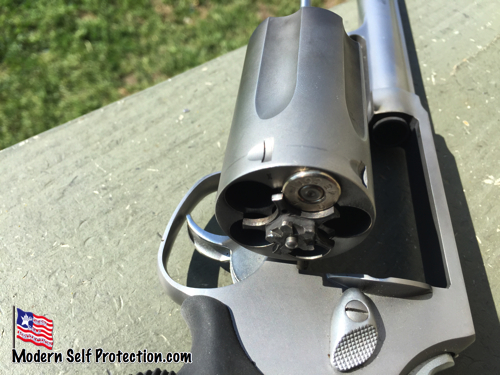
Shifting to the 000 Buck was impressive. The recoil was the same as the .45 Colt HP but I was surprised to see that I could hit targets with the buck shot at ten yards. They where smacking the steel really well and all the shot seemed to hit the target. I shifted to an 8-inch plate at 25 yards. I couldn’t tell if all the shot was hitting but easily hit the plate four out of five times. The miss was user error; I anticipated the recoil and shot the dirt in front of the target.
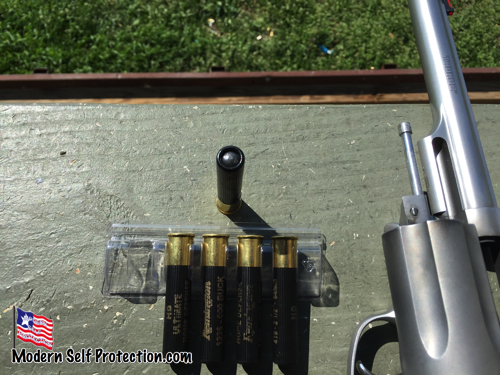
During my limited time with the revolver it shot well. With the one failure to extract I had a couple times the cylinder got stuck in the frame with the shotgun shells. I quickly figured out that you have to make sure you push the high-brassed shotgun shells all the way into the cylinder or they expand and try to lock up the gun. That was user error on my part and not the gun’s fault.
The cool factor of this gun is off the charts and everyone that walked by thought it was awesome! The six-inch barrel really makes it look great. The shorter barrel makes the gun more practical, but the longer barrel looks cooler, I would want the longer barreled version.
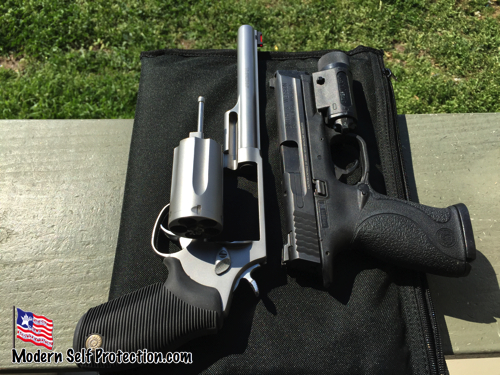
The conversations shifted to practical uses for the gun. I like it so much I wish it was more practical. The only thing I really could think of was using it as a snake gun on a ranch. Having the first cylinder loaded with shot and then the rest with .45 Colts would make it a nice ranch gun. The shot could easily dispatch a snake (especially with the spread I was getting) and the .45 Colts would really do a number to any other large animals that wanted to do you harm (four or two legged).
In the end I’ll be giving this gun back. I really don’t have a use for it. As a range toy it is one of the coolest things out there. If you ever get the chance to shoot one, go for it!
Stay Safe,
Ben
[AFG_gallery id=’30’]
If I were to buy one with 6″barrel could I get it without rifeling in the bottom barrel?